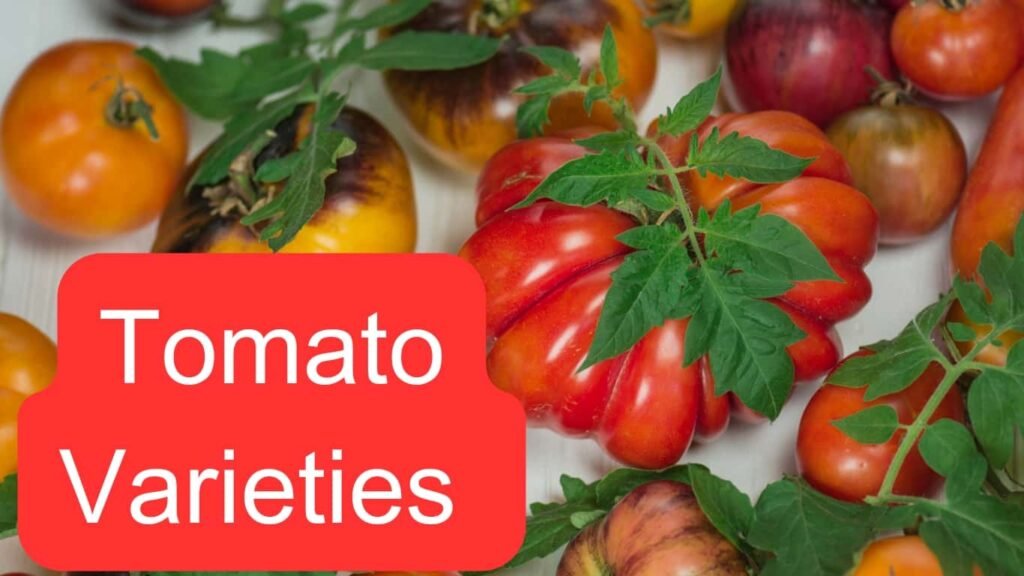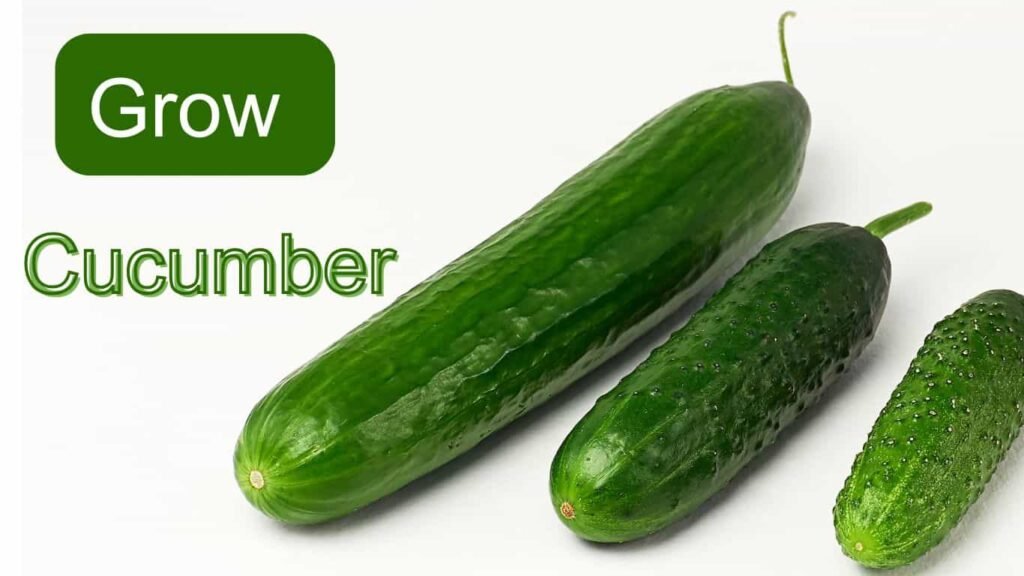Gardening is a nice hobby, and I grow vegetables and fruit on my balcony in pots. So, If you like organic foods too, you can grow in a small space, whether you have a balcony, a compact patio, or a backyard, even a sunny windowsill. You can grow vegetables in pots and turn your small space into a thriving mini-vegetable garden.
In this article, I will tell you how you can grow vegetables in pots and save space, what type of vegetables you should grow, what the best varieties and special vegetables for winters and different seasons, caring tips, nutrition requirements, watering tips, and many other important things which will help you build a small veggies garden at your home.
A good thing about a vegetable garden in pots is that it’s even ideal for apartments, condos, or homes with limited outdoor areas.
Why Grow Vegetables in Pots?

There are many reasons why I recommend growing vegetables in containers or pots to everybody. Even for those who have limited space or live in cities, I myself live in cities. And I do gardening on the balcony. Let me tell you some key benefits:
Suitable for small spaces: As discussed before, vegetable container gardening is a good choice for urban dwellers and those with small spaces or balconies like me. So, because there are many vegetables that are patio-friendly, you can easily cultivate them.
Control over growing conditions: One of the biggest benefits of pot-grown veggies is that you have 100% control over them. For example, you can customize the soil for specific Vegetables, monitor water and nutrient levels, and also you can move it whenever you need.
For example, to save vegetables from extreme heat or cold, you can move the pot inside the home. This control will help you have a healthier and more bountiful harvest.
Accessible for all gardeners: Another benefit of container vegetable gardening is that it’s suitable for beginner and experienced gardeners. Because the pots are easy to manage and allow novice gardeners to dive in with confidence.
Types of pots to grow vegetables
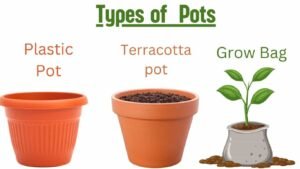
One more good thing, there are many different types of pots, and you can choose whichever you like. Such as:
- Plastic containers or pots: They are lightweight and budget-friendly.
- Terracotta pots are traditional ones and offer natural breathability.
- Fabric grow bags: I also use them; they provide excellent drainage options.
Each pot has its own pros and cons in terms of durability, insulation, aesthetics, etc. You can choose depending on your needs. I myself have grow bags on my balcony.
Choose the right container size
The pot size is really important. You want to make sure it is large enough to accommodate your mature-sized vegetable plant. Generally, you can consider having a pot that is 12 inches in diameter and depth. It is suitable for most vegetables as it provides enough room for a plant to spread its roots and thrive.
Drainage holes are also essential. That’s why you want to do it: holes can let excessive water go out of the pot and prevent waterlogging. It can lead to root rot and many other issues.
Essential tips for growing vegetables in pots
Here are some important tips that you have to follow when you are growing vegetables in pots, including what type of soil you should choose.
Potting soil and nutrients
For container vegetable gardening, you should use a high-quality potting mix that is specifically formulated for edible plants like vegetables and fruits.
This type of soil oil is usually a blend of compost, peat moss, and perlite or vermiculite.
The compost present in soil provides nutrients, while perlite and vermiculite help in drainage and aeration.
However, you want to avoid regular garden soil because it can compact down too much in containers, which can cause poor drainage and oxygen flow around the roots. That’s why it’s better to stick with a lightweight, well-draining potting mix specially designed for vegetables.
Organic Fertilizer and Compost
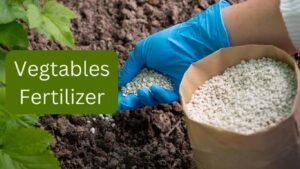
Even after choosing the right potting mix, you will need to supplement your container further. That’s why I suggest you use organic fertilizer and compost.
Slow-release and granular organic fertilizers are always better options. They provide a balanced blend of macro and micronutrients throughout the growing season.
You can regularly do top dressing with compost; it will help provide essential nutrients every day. Some great organic fertilizer options you can include are bone meal, millet meal, or vegetable-specific granular mix.
However, you can also use homemade compost or well-aged manure. It’s organic imports that will keep your container veggies thriving.
Watering Tips
Usually, potted plants require more frequent water than in-ground gardens. It’s because they dry faster and get moisturized quicker as compared to in-ground.
However, it’s a general rule that you want to check the soil daily before providing water. You want to make sure the top 1 inch or 2 of your pot soil is dry when you touch it. If it is dry, you can provide water; otherwise, you can wait.
Even if it’s a little bit soggy, you know it will dry after a few hours. Still, you can provide water to your veggies, especially in the morning, because you want to avoid providing water at noon.
Watering practices for different climates
Now you know how to provide water. However, water frequency also depends on the conditions where you are living.
In hot or sunny areas, you may need to water your container veggies once or even twice a day to prevent the soil from drying out too quickly.
In my city, the temperature reaches up to 40 degrees Celsius (104°F) during the summer days, so I was providing water two times, once in the morning and then in the evening when the plant cools down.
In a cooler and more temperate climate, you will have to provide water every 2-3 days, because the soil will retain moisture for a longer time. However, be mindful of heavy rainfall as it can lead to oversaturation.
Sunlight and placement
Well, how much sunlight is needed depends on specific vegetables. For example, vegetables like tomatoes, peppers, eggplants, and summer squash need full sun. They need at least 6 to 8 hours of direct sunlight every day.
On the other hand, partial sun veggies like leafy greens, brassicas (like kale or broccoli), and root vegetables need just 4 to 6 hours of sunlight every day as they are partial veggies.
There are also shed tolerance vegetables such as arugula, which can actually do well in partially shed conditions because it just needs around 3 to 4 hours of direct sunlight.
That’s why if you are growing vegetables like arugula or leafy greens, etc, based on you can place the container or pot in the right place.
Ideal for placement
Once you know how much sunlight your vegetable needs, you will want to position your pot or container accordingly.
South-facing areas usually receive more direct sunlight, and they are ideal for some plants, like tomatoes.
On the other hand, west-facing and east-facing spots can work well for partial sun varieties.
And lastly, the shady north-sun exposures are suitable for more shade-tolerant options, as we have discussed above.
However, you can also experiment a bit by yourself wherever you find a sunny spot on your balcony, patio, or windowsill. You want to pay attention to how the sun moves throughout the day and adjust your plant placement as needed.
Routine care for vegetables
When you are growing vegetables in pots or containers, it is very important to take care of them if you really want your vegetables to thrive. Here are some tips that you can follow.
Pruning
Regular pruning is very important to maintain the health and productivity of your container-grown veggies.
In simple words, every day or at least once a week, you will remove any dead, damaged, or diseased leaves and stems. It will help to pinch back or trim wavered growth to keep your plant compact and focus on vegetable production rather than just growing in size.
Harvesting
Harvesting is also a part of regular routine care. So, you want to harvest vegetables to enjoy the best flavor and texture from your own container plants.
You should pay attention to the recommended mature time for each crop. Some would have 55 days, some 90 days. It depends on vegetables.
You can gently pick, twist, or snip the vegetables when they reach their peak ripeness.
Pest control
Pest control is really important when you are growing vegetables in confined spaces. You want to keep an eye on common pests like aphids, spider mites, or cucumber beetles.
They can usually just ruin your beautiful crops, so you want to pay attention to them.
Besides this, you can also use organic pest control methods like insecticidal soaps and neem oil, or you can introduce beneficial insects that can eat common pesticides (like Ladybugs, Parasitoid wasps, Ground beetles, and Green lacewings) and save your plant.
However, you can regularly inspect your plant and take any action as soon as you find any issue.
Best and Easy Vegetables to Grow in Pots
Well, now you know all the essential tips for growing vegetables in pots, like the best soil, fertilizer, watering tips, sunlight requirements, pot placement, routine care, disease control, etc.
Now it’s time to understand what type of vegetables you can grow and what the best options available are:
Leafy Green vegetables (easy to grow, quick harvest)
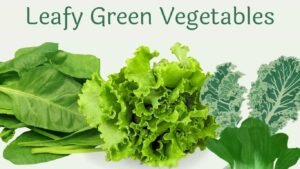
Growing leafy green vegetables is an excellent choice for a container gardener or growing vegetables in pots. They are usually easy to grow and provide a fast turnaround on harvest.
Here are some of my top picks:
- Spinach
- Lettuce (both head and leaf varieties)
- Kale
- Arugula
- Swiss Chard
- Mustard Greens
- Bok Choy
- Tatsoi
- Watercress
- Endive
If you want to grow leafy green, then you should choose a wide, shallow container so that your plant can spread out horizontally.
This type of pot provides ample growing room for the foliage. Besides this, you want to harvest the leaves regularly, as this will encourage continued growth and production.
Remember that most leafy green vegetables thrive well in cooler growing conditions, so that’s why you can consider growing them in spring, fall, and even winter in mild climates.
Also, they can tolerate partial shade, which is a good choice for gardeners who have limited sun exposure.
Root Vegetables (Ideal for Deep Pots)
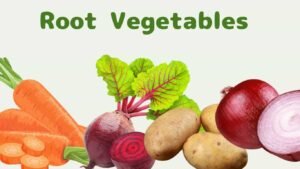
Now, there are many vegetables that we usually have in our kitchen; even my mother adds potatoes in many recipes. However, now let’s know some rooted vegetables that you can consider growing in pots.
Here are some of my favorite vegetables that you can grow in pots:
- Carrots
- Radishes
- Beets
- Potatoes
- Turnips
- Onions
- Garlic
- Parsnips
- Shallots
- Ginger
You just have to provide depth to these types of root vegetables. Since their edible portion grows underground, they will need sufficient soil volume to develop properly. That’s why you want to have a pot at least 12 inches deep, if not deeper.
Besides this, root vegetables perform best in temperate and cooler growing regions. You can even grow them throughout the winter in milder climates.
Plus, You can even grow these root vegetables if you are living in urban areas and have a small space for gardening. Just be sure to choose the right pot and provide proper care, as we have discussed.
Fruit-bearing vegetables (Good for larger pots and more advanced gardeners)
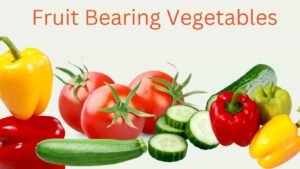
Fruit-bearing vegetables also can do well in container gardens. However, they are a little bit more advanced than leafy greens and root veggies.
That’s why you have to follow the right approach. If you do so, they can easily thrive in pots.
Here are some of the best fruit-bearing vegetables for containers or pots:
- Tomatoes
- Bell Peppers
- Cucumbers
- Eggplants
- Zucchini (choose compact or bush varieties)
- Cherry Tomatoes
- Jalapeños
- Strawberries (while technically a fruit, they’re often grown in vegetable gardens)
- Pole Beans
- Peas
Also read:
As we discussed, for root vegetables like radishes and leafy green vegetables like lettuce, you need at least 12-inch deep pots. However, when you want to grow fruit-bearing vegetables like tomatoes, bell peppers, cucumbers, etc., you need a large pot because their roots need more space to spread out.
You want to go with at least a 16 to 20-inch pot in diameter for the best result. It is even better if you have a 24-inch deep pot, but 16 or 20 inches is also good.
Besides this, for fruit-bearing vegetables like cucumbers, you need to have proper staking or trellising. It is very important for vining and sprawling plants.
However, don’t forget to provide at least 6 to 8 hours of direct sunlight, as they are sun-loving veggies. Plus, it makes them well-suited for hot and sunny climates but requires a little more care.
Herbs (Perfect for beginners and small spaces)

You can also grow herbs in a container when you have a vegetable garden. They are perfect for beginners and for those who have small spaces.
Here are some of the best herbs you can grow with vegetables in pots:
- Basil
- Parsley
- Cilantro
- Mint
- Thyme
- Rosemary
- Chives
A good thing about growing herbs in a container is that you don’t need a large pot size, like 12 – 16 or 24 inches, for fruit-bearing vegetables and root vegetables.
For herbs, you will only need a 6 to 8-inch pot in diameter, which you can tuck into tight spaces like balconies, patios, or even sunny windowsills.
So, along with vegetables, you can also grow herbs. It is perfect for urban gardeners and for those who have limited outdoor areas.
Another advantage of growing herbs is that they can be grown year-round, but it depends on your climate.
You can grow herbs like parsley and cilantro in cold seasons. And in warm weather, you can grow herbs like basil, mint, etc.
Herbs also need simple care, such as moderate water, nutrients, rich protein mixes, etc. And a little bit of pruning and harvesting. That’s it.
Vegetables to grow in pots during winter
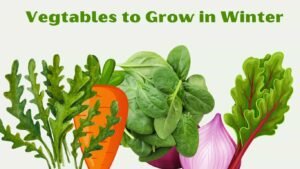
Yeah, it is true that growing vegetables in pots during winter is a little bit challenging. But it’s not impossible because I have grown it, and many other people whom I know have grown it. So you can do that too. You just need the right approach.
Here are some of the top vegetable options to grow in pots during winter:
- Spinach
- Broccoli
- Kale
- Onion
- Lettuce (especially winter-hardy varieties)
- Arugula
- Swiss Chard
- Mustard Greens
- Radishes
- Carrots (choose shorter varieties)
- Garlic
- Green Onions (Scallions)
- Beets
- Pak Choi (Bok Choy)
- Peas (especially dwarf varieties)
- Parsley
- Cilantro
Also, there are many small vegetables that you can grow in winter, but I will mention only those that we usually use in our kitchen.
Tips to grow vegetables in pots during winter
Frost protection is really important during winter. That’s why you want to use blankets and row covers, or you can even place your pot indoors on the coldest night to protect your plants from getting damaged because of extreme temperatures.
Growing zone appropriate: make sure to select vegetables that suit the winter conditions in your growing zone. It will ensure that your vegetables will thrive despite the colder weather.
You can also place your pots in the shelter, like on a sunny spot on your balcony or patio. It can help insulate the root and keep the plant productive. Besides this, you can also have a mulch layer on the soil.
Common challenges and how to overcome them
When you are growing vegetables in containers or pots, you might face some unique challenges. That’s why here are some challenges that you can face and how you can address them:
Pests In pots
The pesky insects can find shelter in your container. However, don’t worry about that. There are natural solutions available to get rid of them. One of them is the companion planting approach. You can strategically place herbs and flowers around your vegetable, like mint or rosemary, etc.
Besides this, you can also attract some insects that can eat pesky insects, such as lacewings and ladybugs. Moreover, you can also create homemade organic pest repellent by using garlic, chili peppers, and neem oil.
Overwatering and drainage issues
It is one of the most common challenges that people face. However, it’s simple to tackle it. You just want to make a proper hole in the bottom and have a little loose soil. Like potting mix, it shouldn’t be too tight that excess water can’t go out of the pot.
You can also line the bottom with pebbles or gravel to improve drainage. Besides this, you want to provide water in moderation. Don’t provide too much or too little unnecessarily. Just make sure the soil is dry before providing water.
Lack of sunlight in urban areas
Sometimes, finding direct sunlight in urban areas is a little challenging, especially during the winter season.
However, if your balcony or patio is shaded most of the time during the day, then I have a solution for you. You can use a reflective surface to bounce light onto your plant.
Besides this, you can also consider investing in a small grow light system to supplement natural light.
When you are selecting vegetable varieties for low light conditions, look for shed-tolerant options such as leafy greens, herbs, and certain types of tomatoes to cultivate.
FAQs on growing vegetables in pots
Here are the most important questions and answers that you need to know.
Can all vegetables be grown in pots?
No, not all vegetables can be grown in pots easily. You can grow many vegetables like lettuce, peppers, spinach, reddish and dwarf beans, etc. in pots, But you will need more soil and space for pumpkins, watermelons, lemons, etc. It’ll be hard to grow them in a pot.
What are the easiest vegetables to grow in pots?
Some of the most beginner-friendly, easiest vegetables that you can grow in pots include:
- Tomatoes (especially cherry or patio varieties)
- Peppers
- Leafy greens like lettuce, spinach, and kale
- Herbs like basil, parsley, and chives
- Radishes
These are low-maintenance vegetables that can thrive in a confined space of pots.
What vegetable grows best in winter?
During the winter season, you can grow crops like Swiss Chard, Kale, Broccoli, Brussels sprouts, and Carrots. They will do pretty well in containers or pots, especially during colder months.
However, make sure you are protecting yourself properly from frost. To protect your plants during winter, you can move your pot to a sheltered area or consider covering them with a cloth, especially during chilly nights.
How can I care for potted vegetables during a hot summer or cold winter?
During the winter and summer seasons, you first want to adjust water frequency, light, and temperature. In summer, make sure to provide water frequently to prevent wilting. Sometimes, you will have to provide water daily, even twice a day, but it totally depends on your area.
Plus, you can also relocate pots to shade areas during the hottest part of the day. For winter, you can group pots together to insulate them, and you can also use a frost blanket, cold frames, etc., to protect your plants from freezing.
Conclusion
There are many vegetables to grow in pots in all seasons, like lettuce, broccoli, tomatoes, reddish cucumbers, and many more. You just have to provide proper care and maintenance, such as providing water frequently depending on your conditions, regular pruning, and protecting your plants from extreme heat during summer days or chilly nights in winter.
One good thing about container gardening is that you don’t even need too much space. You can grow vegetables on balconies, patios, backyards, etc. I myself have coriander, tomatoes, and many other things on my balcony, which my mother uses for cooking.
Therefore, even if you are a beginner or an experienced gardener living in a suburban or urban area, you can consider vegetable gardening in containers. Trust me, when you grow organic vegetables by yourself, they taste better. Plus, home gardening is a nice hobby that you can have.
